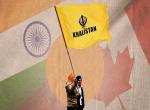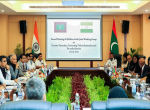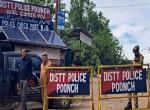The news of the four Indian youth from Kalyan joining the Islamic State (IS) in July 2014 became a major concern to the newly-elected government in New Delhi. This was one of the first instances which exposed the probable involvement of Indian Muslims with this dreaded outfit. In a way, the attraction and influence of the IS in South Asia has been evidenced by such activities where many radicalised youths have shown their allegiance and support to the Sunni militant group. Apart from India, the tentacles of the IS have spread to other countries such as Pakistan, Maldives, Philippines, Indonesia and Malaysia. There have been increasingly IS-related activities inside these countries, which are either in the form of ideological support, hoisting of flags, graffiti, distribution of pamphlets and departure of young boys for Iraq and Syria.
The growth of the influence of the IS is attributed to its effective recruitment process using some of the most famous social media tools such as Facebook, Twitter, various chat rooms and websites. These tools, till today, are continuing to play their role, enticing radicalised minds and terror outfits from across the globe.
At the moment, a new trend of ‘self-radicalisation’ is emerging. Without any direct involvement of the IS fighters or any other terror groups, they spread the extreme ideologies of such outfits often with the help of social media. This is going to be a major issue that would be difficult to tackle in the days to come.
The Case of a Returnee :
In India, ever since the news broke out about Muslim youth travelling to Iraq and Syria to fight for the IS, the security establishment inside the country have been exploring the reasons for the attraction of IS among a section of the Muslim community. The social and educational background of these people surprised the security agencies. This is because most of them did not fit the normal profile of people who usually take to terrorism. None of the four boys who travelled to the conflict zone were from the deprived or discriminated section of the society, and they were well-educated. Further, they were not unemployed. For instance, Arif Majeed, who returned to India in late November 2014, was an engineering student before he fled to join the IS. “Dissatisfaction” with the ways how the IS fighters treated Majeed was the probable reason that might have forced him to come back to India.
The movement of radicalised Indian Muslim youth to West Asia to fight for the IS is not only on the ground of social marginalisation or economic deprivation. An active involvement of local people in the recruitment process is highly suspected. And, a robust online recruitment process has been instrumental in brainwashing the easily-susceptible youths towards joining the IS militants to fight in West Asia, and also to express sympathy and support for the group.
From the preliminary investigations which had been carried out by the National Investigation Agency (NIA), it has come to be known that Majeed’s attraction towards IS began with a brief chat in an internet chat room. Through this media tool, he established further contacts with a few people in Iraq. Hereafter, Majeed’s interest in the activities of the IS developed significantly. But to reach Iraq, Majeed had come up with the idea of using the pilgrimage route, which is very popular in India. As soon as he returned to India, Majeed, he was booked under “sections 16 (punishment for terrorist act), 18 (punishment for conspiracy etc), 20 (punishment for being a member of terrorist gang or organisation) of the Unlawful Assembly Prevention Act (UAPA) and section 125 of IPC which deals with waging war against any Asiatic country which has friendly ties with India.”
The ongoing investigations have revealed some of the previously-unknown facts about Arif Majeed’s actual tasks while staying in the IS camps, and importantly what this terror outfit is actually doing. One of the surprising revelations was Majeed’s admission that he was given a very insignificant task of “cleaning toilets” and other menial chores such as “providing water” to those who were deployed in the battlefields. These activities had diminished the importance of his role in the IS, but the investigators anticipated more extreme activities that might have been performed by the arrested Indian youth. The bullet marks on Majeed’s body further raised suspicions about his possible involvement in fire fights. During further grilling of Majeed, he had spilled the beans about the training he received while handling sophisticated weapons such as AK-47 and rocket launchers. Then on, the security agencies took his association with the IS with utmost seriousness. In one of his answers, Majeed mentioned about 20 Indian youths who are believed to be fighting either in Iraq or Syria, and this has concerned the security officials who are following the events in West Asia, and those tracking down the Indians involved with the IS. It has now become imperative to find out if there is anyone from the Indian expatriate community in the Persian Gulf countries who could be assisting in the movement of youths from India to join the dreaded outfit.
The Indian investigators have been able to garner important information about IS’s recruitment policy of Indian youths as well other aspects of the outfit. Apart from the effective role of the internet while enticing the Indian Muslim youths, Majeed also disclosed about how the IS conducts some of the most inhumane crimes such as rape and execution of people with “impunity.” Furthermore, the IS considered the Indian youths too feeble to be fighting, as a result, assigned the aforementioned menial jobs. The IS fighters, according to Majeed, are not “religious warriors” but “mercenaries.” Apart from these revelations, what has triggered a serious alarm within Indian security establishments is the potential “plans” the IS has for the country. There are suspicions that Majeed had been released by the IS not just because he was deemed to be unfit to take up arms and fight, but to spread the extreme ideology propagated by outfit inside the country.
It has been already argued that the impact such returnees could leave in India would depend on how far they have been indoctrinated by the IS during their stint either in Iraq or Syria. Along the course of the investigation, security agencies have confirmed their worst fears as Majeed disclosed about trainings he received for suicide bombing as well. He even tried to blow himself up using an explosive-laden vehicle, an attempt that remained futile. This is the extreme form of terrorism that the IS militants could induce on such young fighters from countries outside West Asia. Such revelations have also given an idea about the kinds of extreme tasks that are given to these young fighters. It is also very probable that Majeed might have agreed to become a suicide bomber just because he wanted to prove to his leaders that he had the qualities in him other than that of a toilet cleaner.
It becomes apparent from Majeed’s account or experience of the extremities in nature of both his tasks dictated by the IS fighters. Moreover, the negligence and lack of medical support upon incurring a serious injury is particularly disturbing. These anguished disclosures should serve as a reminder once again and provide ample reason to deter and divert any thoughts that the sympathiser and supporters, who harbour the notion of enlisting oneself, just as Majeed did, to this terror outfit.
There are also reports that the Kalyan boys had been brainwashed by a few local clerics (from Maharashtra). This is in addition to the contacts they made with people connected with the IS. In a report published recently, one Mumbai-based “religious cult, Islamic Guidance Society” (IGS), with the involvement of a few of its members, was believed to have arranged the departure of Majeed and his three friends to West Asia. The probable role, including the funding, that could have played by this institute is being investigated. Apart from IGS, another organisation is also suspected to have been involved in the radicalisation process, and that is the Anjuman –I-Islam's Kalsekar Technical College located in Panvel (in Mumbai). NIA and anti-terrorism squad (ATS) in Mumbai are probing the role of these educational establishments.
In a country with a significant Muslim population, the alleged involvement of people and educational places in radicalising young people is a worrisome factor. Such practice could go in favour of not only IS but other terror outfits operating in and around the country while garnering support for their destructive activities.
As the NIA-led investigation exposed some horrifying facts, India now has a huge task of preventing the growth of radicalism inside the country, and to stop further movement of suspicious characters to countries such as Iraq and Syria. It is imperative that efforts should begin from grassroots level. For instance, the mushrooming of religious learning places, with extreme radical ideologies, needs to be checked. This would need an involvement of local populace and Muslim Ulemas with strong condemnations of the radical Islamic ideologies propagated by the IS or any other extremist groups. Along with this, a dimension that needs to be scrutinised thoroughly is the composition of people that go to West Asia for pilgrimages, particularly, to Iraq. This is going to be an arduous task, particularly, to single out suspicious characters when Indian pilgrims to Iraq usually touch 25,000 to 30,000 every year, comprising a sizeable youths under the age of 30. However, steps have been taken by Iraqi government-organized agencies such as Alshaya Nasser Travels by advising “tour operators not to accept passports from applicants who are single, under 30 and unaccompanied by family members.”
Issues of Self-indoctrination and Lone-Wolf Attacks: Influenced by the IS
The continuing trend of educated Indians expressing sympathy or support for the radical ideology of terror outfits such as the IS is extremely dangerous. For this, such people do not have to go to Iraq or Syria to fight along the IS fighters but they could influence other like-minded fellows. This phenomenon of “self-appointed propagandists” that is developing inside the country cannot be ignored. The social media has become one of the most important instruments in spreading the ideology of the IS as well legitimising its activities. The arrest of Mehdi Masroor Biswas, a 24-year-old engineering executive with an Indian multinational company, is believed to be one such case of “self-appointed propagandists.” His Twitter handle by the name @Shami Witness reportedly had about 17,700 followers. In addition to this, two thirds of the foreign fighters reportedly followed his account. After his IS-related activities were exposed by the British Channel 4 News, there was speculation that he was one of the biggest online recruiters in India for this terror outfit.
It is evident that there is a support or sympathy for the IS in India. Mehdi has mentioned that he “he didn’t like to be a foot soldier but wanted to be in the top layer, as a strategist.” This fits in well with the belief that the IS fighters mostly prefer other foreign recruits who are fit for battle fights, and Indians to be used for menial jobs as mentioned above. But such radicalised and educated Indians, mostly from the IT sector, could be helpful in spreading the IS influence with the use of social media. His style of operating the account in disguise might have already influenced those people who would like to propagate extreme ideologies of the IS.
The possibilities of lone-wolf attacks by self-indoctrinated people should not be downplayed. The recently-concluded Sydney hostage crisis is a good example although it is not related with the IS. This particular incident should, however, be an eye-opening for India. The law makers and the security agencies should be cognisant of the fact that the face of terrorism has changed, and the lone-wolf attack is one emerging phenomenon. As a result, India should have a mechanism to face this menace.
Conclusion
Given the nature of Indians who are involved with the IS-related activities, it is clear that it is not only the people from socially or economically marginalised sections of the society who are attracted towards the path of terror. The support exhibited by educated upwardly mobile people with good jobs is an alarming trend.
As the IS continues to spread its propaganda with the help of social media and internet, it is imperative to establish a strong cyber monitoring mechanism. The online campaign for IS needs to be tackled. There should be a robust cooperation between the social media firms and security agencies. In the past, there had been problems between these establishments on issues related to sharing of information. But considering the current dire situation, such issues can no longer be taken lightly and cooperation and coordination between all the stakeholders is inescapable..
An important step that has been taken up by India is the imposition of ban on the IS. Further, the government is likely to set up a committee, to be constituted by India’s National Security Advisor, to enhance the cyberspace monitoring. This is a significant measure initiated by the Ministry of Home Affairs, whereby the committee would implement and execute policies depending on the nature of cyber threats. There should be no further delay in executing these plans. Otherwise, a catastrophe cannot be ruled out in India.










Post new comment